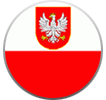On this page:

The difference between public and non-public schools
School establishment
Public schools: Public or state schools in Poland are always established and run by local government or state units.
Non-public schools: Non-public or non-state schools in Poland may be created in two different ways: (i) by legal bodies other than the government (such as associations, religious bodies, foundations, or companies), and (ii) by persons. To start a non-public school, approval must be granted by the register of institutions and non-public schools. A non-public school cannot be established by the government.
Availability
Public schools: Public education in Poland must be accessible to all. And similar to Canada and the US, in primary school, which is compulsory, students must be accepted by their local district public schools. Moreover, a non-public school can’t remove a student from a primary school (which is compulsory), though they can transfer them to another school.
Non-public schools: Non-public schools can decide which students to admit, using their own criteria. They can also remove a student from school for various reasons (e.g., for poor behaviour, failure to pay fees, etc.).
Costs
Public schools: Public schools don’t charge tuition fees. They’re free to all.
Non-public schools: Non-public schools charge tuition and there may be other fees as well. One exception is non-public schools created from public schools (see below), which are free of charge.
Government criteria
Public schools: Public schools in Poland are required to follow government rules of regarding school curriculum, organization, assessment, and more.
Non-public schools: Non-public schools, except those created from public schools, don’t have to follow these rules. Normally, though, they do, and they often meet and surpass government guidelines.
Three main types of non-public schools
Non-public schools in Poland aren’t established or run by the government. Nor must they follow government rules for curriculum, organization, or assessment (though they often do).
Beyond that, there are three main types of non-public schools: those without public school credentials, those with public school credentials, and those created from public schools (with public school credentials). Below, we discuss each type of non-public school.
Keep in mind, non-public schools also differ in terms of their aims, curricula, philosophies, and teaching approaches. For instance, there are international, Montessori, Waldorf, social, and special needs non-public schools.
Non-public schools lacking public school credentials
Some non-public schools in Poland don’t follow public school guidelines. This means they don’t follow the rules for Polish education (or at least some of them) established by the government. These rules govern curricula, student assessment, promotion, and more. Few non-public schools in Poland fall in this category, and they are all post-secondary schools.
Non-public schools with public school credentials
Most non-public schools have public school qualifications. These schools follow the Polish National curriculum and the government’s rules for assessing students established by the Ministry of Education. This allows students to obtain state certificates and diplomas when they graduate.
In fact, all non-public primary schools have these public school credentials. This means that they receive government funding. The size of a school’s subsidy will depend on the nature and aims of school.
The only schools without public credentials are post-secondary schools. This includes general universities and post-secondary schools focusing on specific skills.
- Universities (e.g., the University of Warsaw)
- Art and language schools (e.g., the Gdynia School of Art)
- Business schools (e.g., the West Pomeranian Business School)
- Design and advertising schools (e.g., Annual Study of Design and Advertising)
- Health and beauty schools (Annual Health and Beauty Study in Bydgoszcz)
Non-public schools created from public schools
Many non-public schools with public credentials were created from a public school by a person, group of persons, or local community. These schools are normally in rural communities in Poland.
They are free of charge and receive government funding. They also meet public educational goals, implement the national curriculum, organize exams based on the Ministry's guidelines, and are supervised by a government board. These schools are considered public in a sense, since they provide universal access to education and are free.
People who read this also viewed:
- Non-public schools in Poland
- Why private school?
- Benefits of Polish private schools
- Private schools in Poland
- Poland school uniforms
- Myths about private education
- ABC of educational terminology: Glossary of terms and concepts
-
Advice Guide
- ABC of educational terminology: Glossary of terms and concepts
- The admissions process
- Advantages and disadvantages of studying in an international school
- The application process
- Benefits of Polish private schools
- Bilingual schools
- Boarding schools
- Choosing a private or nonpublic school in Poland
- Compare schools in Poland
- English schools in Warsaw
- Homeschooling
- International schools in Kraków
- International schools
- Private school interviews
- Music education
- Myths about private education
- Non-public schools in Poland
- School open houses
- Our Kids Interview: Get to know EF Academy Oxford
- Our Kids Interview: Get to know Open School
- Our Kids interview: Get to know Regent College International Schools
- Our Kids Interview: Get to know The American School of Warsaw
- Our Kids Interview: Get to know The British School Warsaw
- Our Kids Interview: Get to know Wrocław Cosmopolitan School (two interviews, new video)
- Poland school profiles
- Private day schools
- Gifted schools & programs
- Private Jewish schools in Poland
- Language schools
- Private school tuition and costs in Poland
- Private schools in Poland
- Private schools in Poland offering French-language immersion
- English immersion schools
- Poland school uniforms
- Private special needs schools in Warsaw
- Public versus non-public schools in Poland
- Private school questions
- Private school rankings
- Reasons for choosing private schools - Our Kids’s survey report
- Religious schools
- Schools and classes for children with ADHD in Poland
- Social primary schools
- Social Schools
- Special educational needs (SPE) certificates
- Special needs schools
- Study abroad at a private school
- The first annual non-public school fair in Poland
- The first annual Our Kids non-public school expo in Warsaw was a great success
- Third Private School Expo in Warsaw - summary
- Types of schools
- Types of schools in Warsaw
- Warsaw preschool costs
- Why private school?
- Why parents go private
-
Grades
- Boarding high schools
- Choosing a high school in Poland
- Mokotow High School Campus - a new Warsaw high school and Thames British School campus
- Montessori nursery schools
- Montessori preschools
- Our Kids Interview: Get to know English Montessori School Katowice
- Our Kids Interview: Get to know FSA School
- Our Kids Interview: Get to know KIDS & Co.
- Our Kids Interview: Get to know Polish British Academy of Warsaw
- Our Kids Interview: Get to know The English Playhouse and The English Primary
- Poland education: grade levels
- Preschools in Warsaw
- Private & non-public preschools
- Private & non-public primary schools
- Private bilingual elementary schools in Warsaw
- Private high schools
- Private high schools in Warsaw
- Private middle schools
- Nursery schools
- Private primary schools in Warsaw
- Social high schools
-
Locations
- Boarding schools in Warsaw
- English schools in Kraków
- International Baccalaureate (IB) schools in Warsaw
- International schools in Warsaw
- Montessori schools in Warsaw
- Non-public schools in Warsaw
- Our Kids Interview: Get to know EF Academy
- Our Kids interview: Get to know Excellence in Education better
- Our Kids Interview: Get to know PRIMUS Non-Public Primary School No. 47 and Non-Public Secondary School
- Our Kids Interview: Get to know the Canadian School of Warsaw
- Our Kids Interview: Get to know The Primary and Secondary Schools of the Sisters of Nazareth in Warsaw
- Private Catholic and Christian schools in Warsaw
- Private day schools in Warsaw
- Private language schools in Warsaw
- Private schools in Bialystok
- Bydgoszcz schools
- Częstochowa schools
- Private schools in Gdańsk & Gdynia
- Katowice schools
- Private schools in Krakow
- Lublin schools
- Olsztyn schools
- Private schools in Poznań
- Private schools in Rzeszów
- Szczecin schools
- Private schools Warsaw
- Private schools in Wrocław
- Zielona Góra schools
- Private schools in Łódź







 POL
POL CAN
CAN